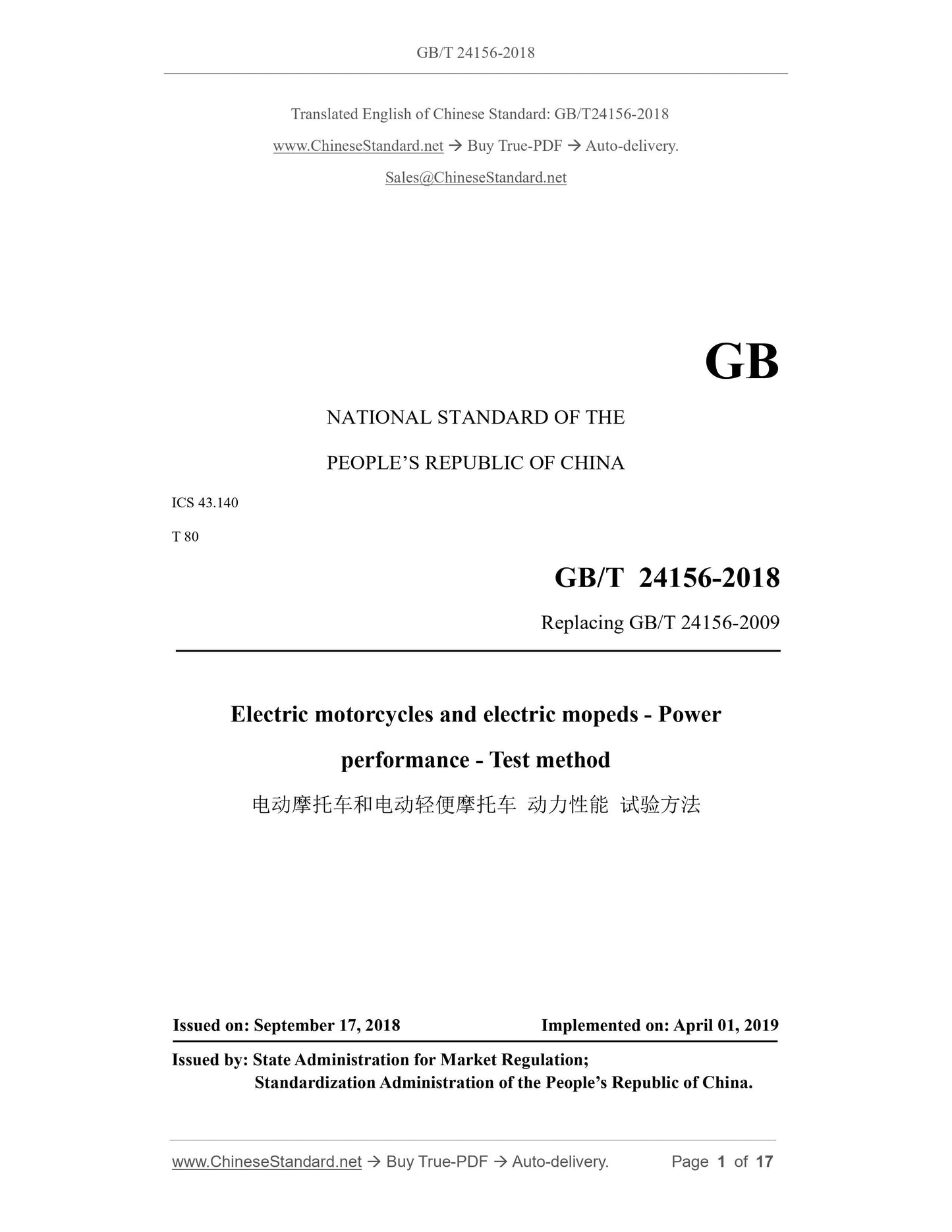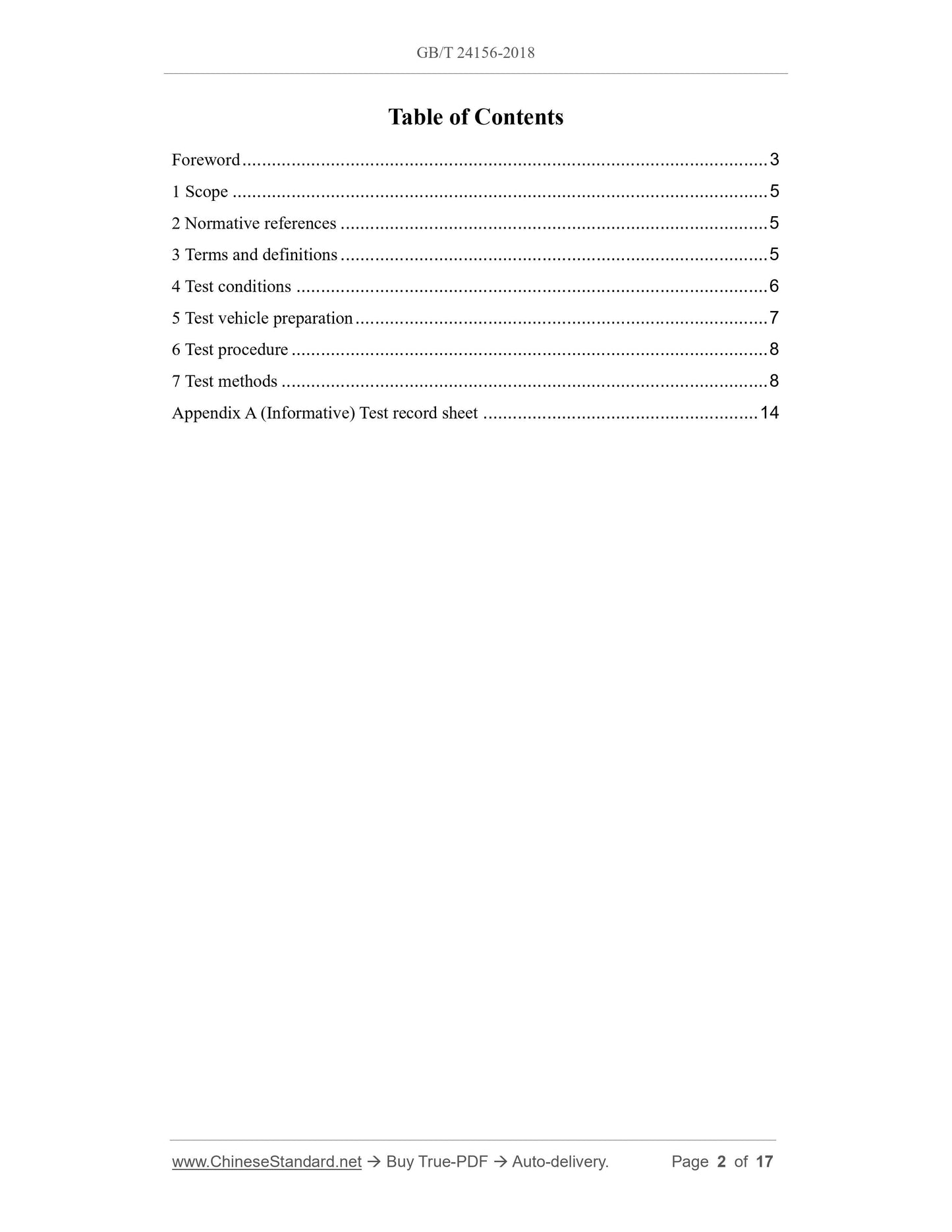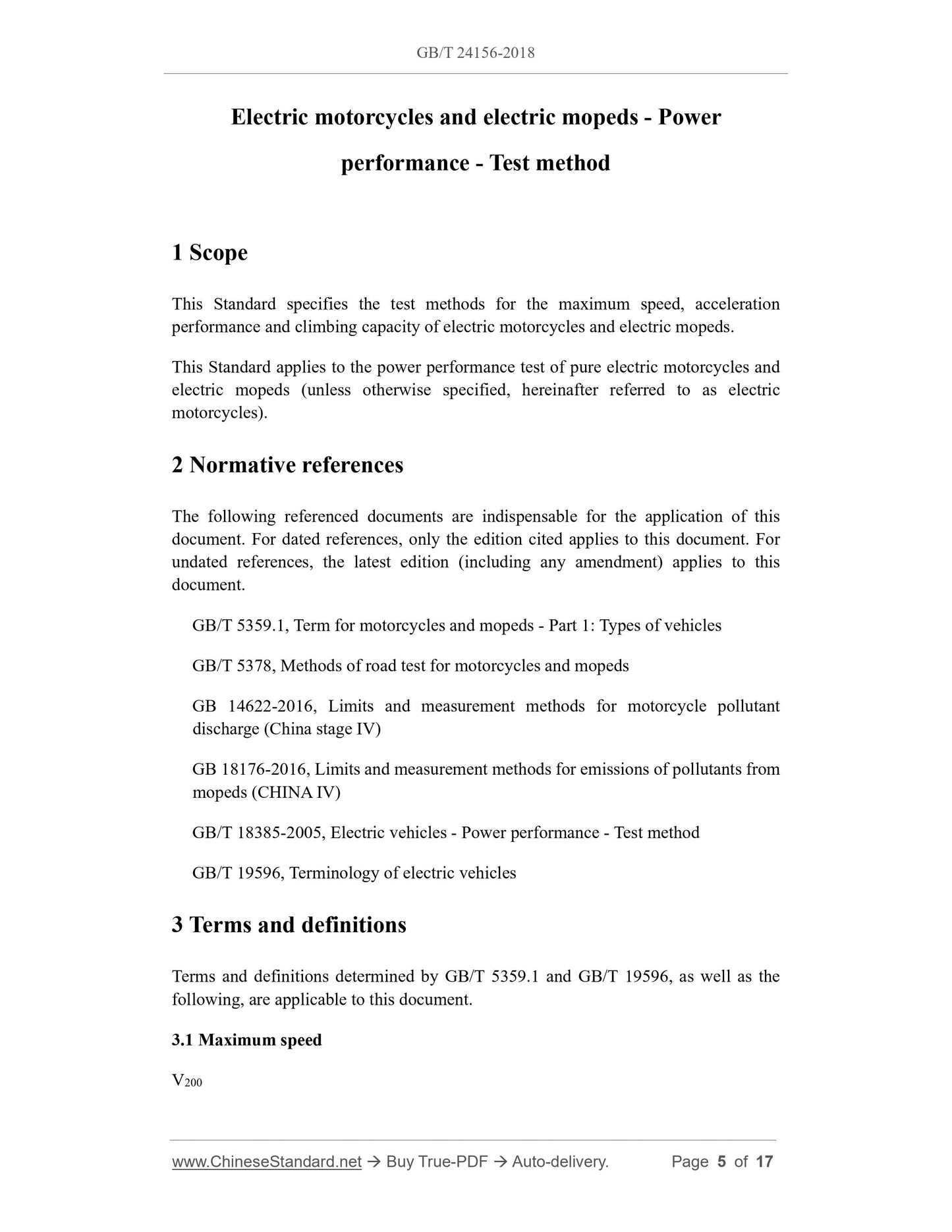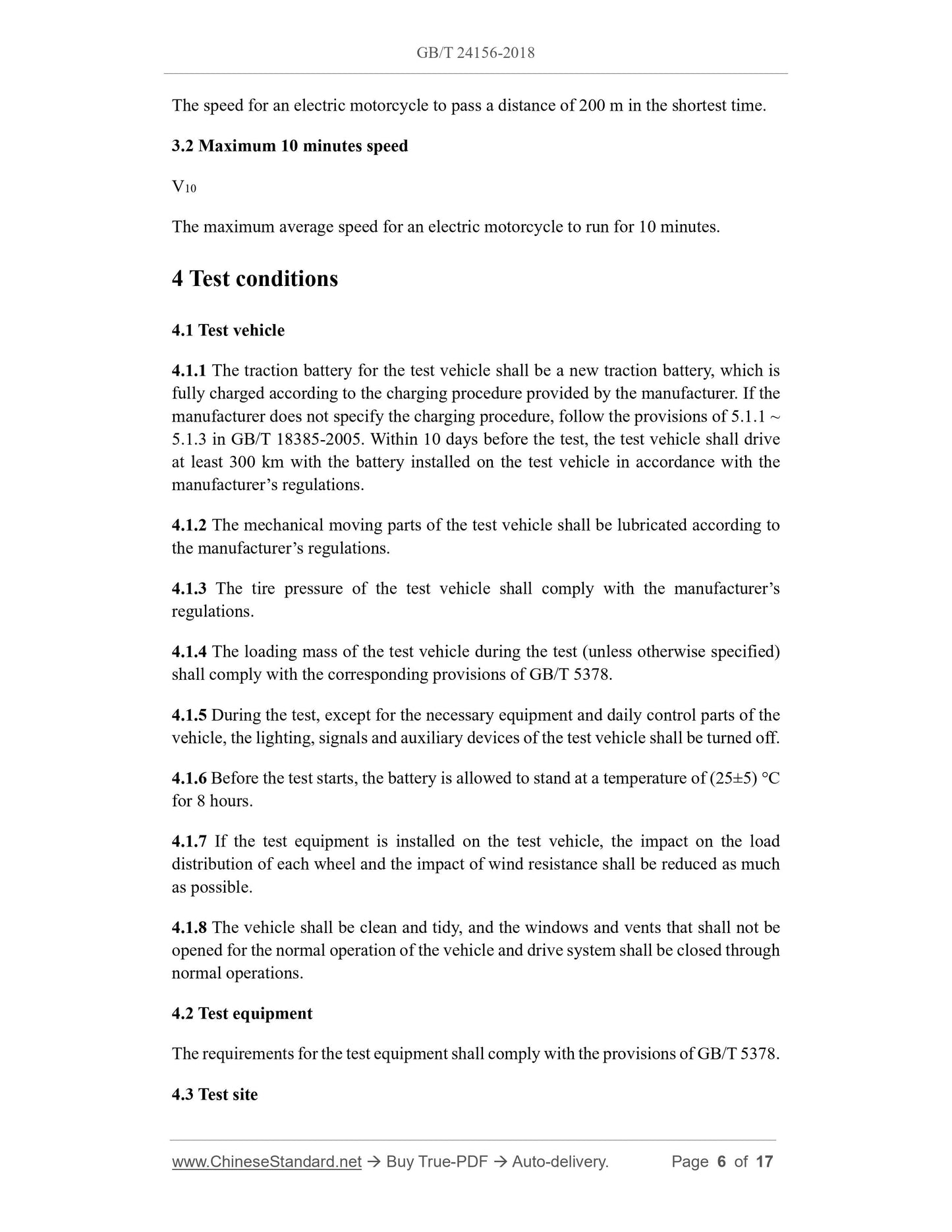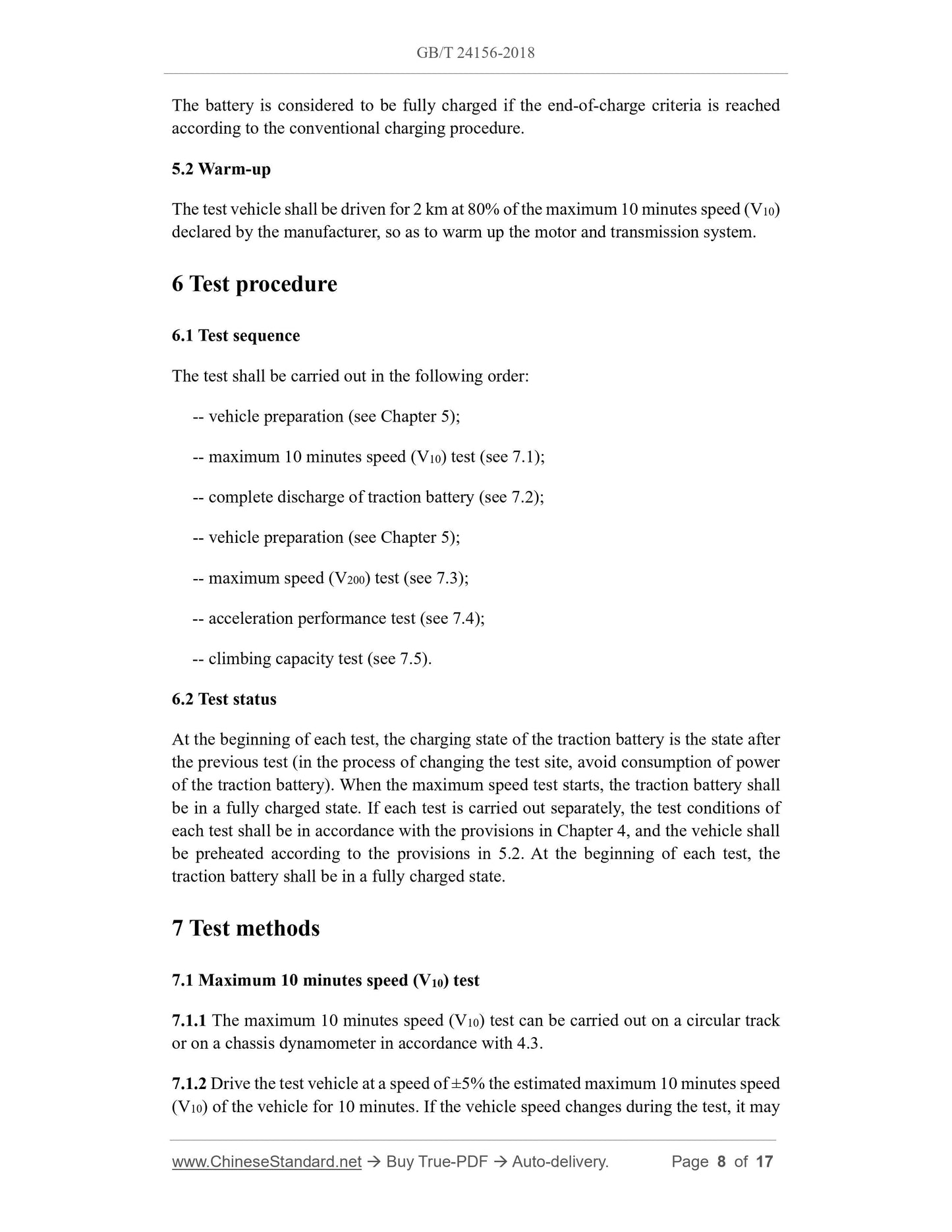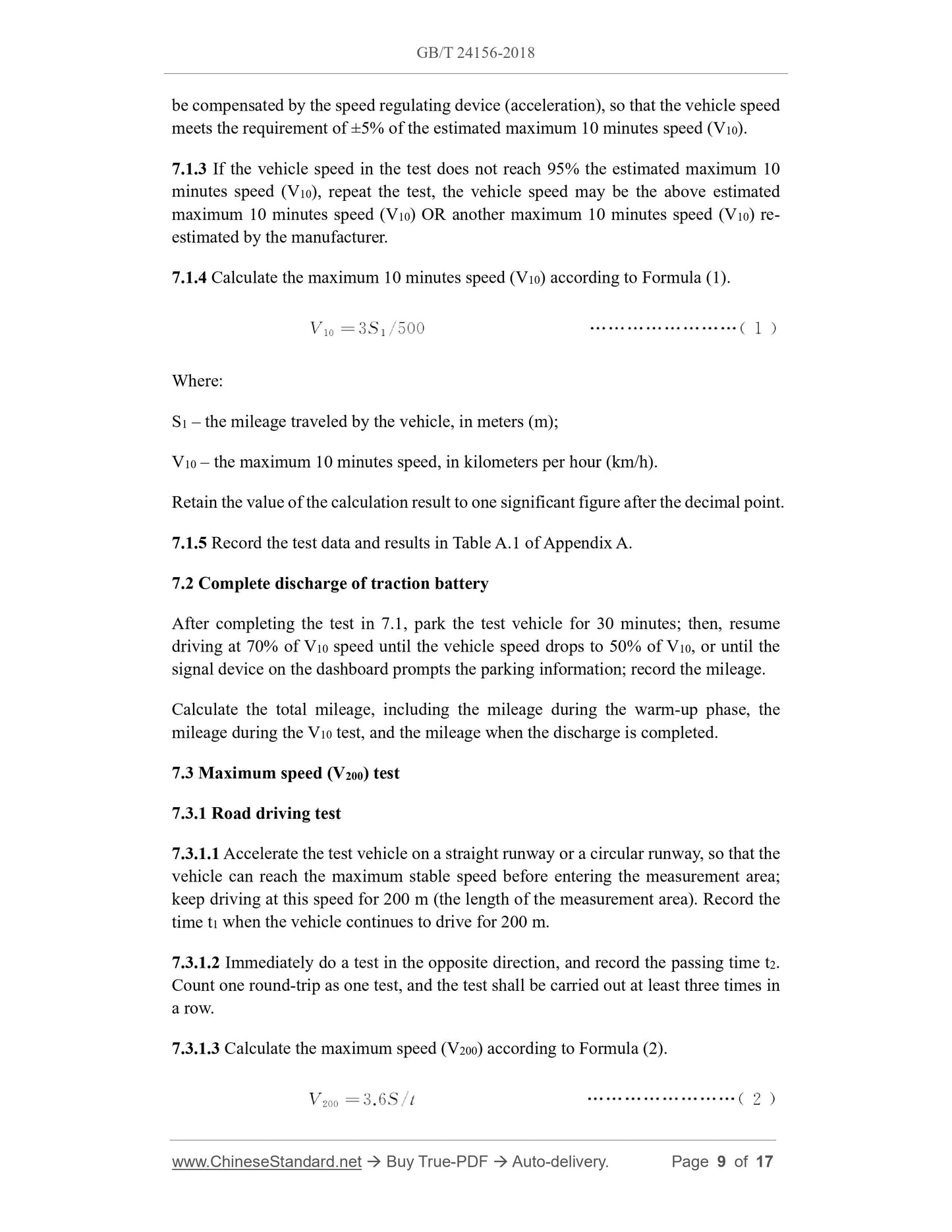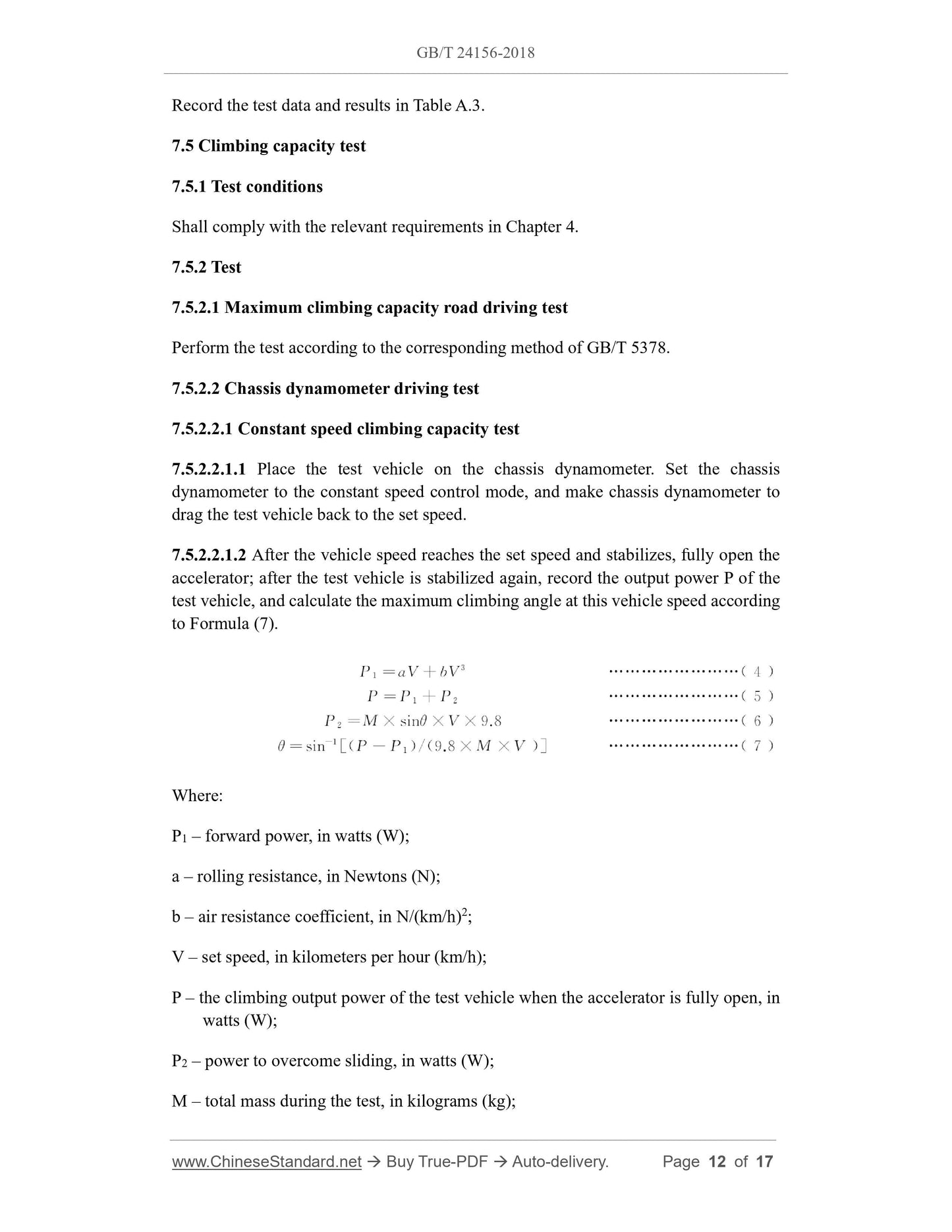1
/
of
7
www.ChineseStandard.us -- Field Test Asia Pte. Ltd.
GB/T 24156-2018 English PDF (GB/T24156-2018)
GB/T 24156-2018 English PDF (GB/T24156-2018)
Regular price
$185.00
Regular price
Sale price
$185.00
Unit price
/
per
Shipping calculated at checkout.
Couldn't load pickup availability
GB/T 24156-2018: Electric motorcycles and electric mopeds - Power performance - Test method
Delivery: 9 seconds. Download (and Email) true-PDF + Invoice.Get Quotation: Click GB/T 24156-2018 (Self-service in 1-minute)
Newer / historical versions: GB/T 24156-2018
Preview True-PDF
Scope
This Standard specifies the test methods for the maximum speed, accelerationperformance and climbing capacity of electric motorcycles and electric mopeds.
This Standard applies to the power performance test of pure electric motorcycles and
electric mopeds (unless otherwise specified, hereinafter referred to as electric
motorcycles).
Basic Data
| Standard ID | GB/T 24156-2018 (GB/T24156-2018) |
| Description (Translated English) | Electric motorcycles and electric mopeds - Power performance - Test method |
| Sector / Industry | National Standard (Recommended) |
| Classification of Chinese Standard | T80 |
| Classification of International Standard | 43.140 |
| Word Count Estimation | 14,123 |
| Date of Issue | 2018-09-17 |
| Date of Implementation | 2019-04-01 |
| Older Standard (superseded by this standard) | GB/T 24156-2009 |
| Issuing agency(ies) | State Administration for Market Regulation, China National Standardization Administration |
Share
